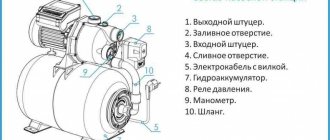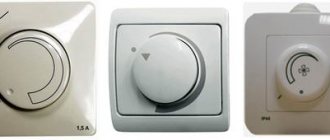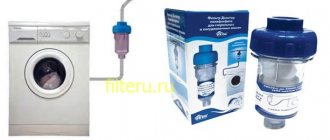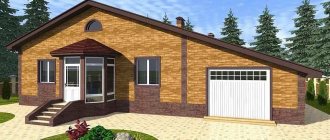If you find yourself here, then you have a task: to introduce electricity into your private home. And of course there are many questions in my head: which cable to choose? Which introductory machine should I install? Which counter should I choose? And in the end, how to combine all this into one properly working system. We would like to share our experience of how we carried out air entry into our country house. Well, now let's look at all our steps and thoughts in order. What we had: on the street there was a concrete pole with main wires, aluminum wires were connected from it on twists, then they were connected to the output wire at the gander on the roof.
It was necessary to replace all this old stuff with something modern, and the best option to do this was using 2x16 SIP wires.
Input methods
There are two options for connecting to a power line: underground and overhead methods. They have their own advantages, disadvantages and installation features.
Let's look at the correct schemes for underground and overhead electricity input.
Change No. 1: is it possible to arrange an offline connection, bypassing SNT?
Summer residents now have the opportunity to connect to power grids directly by concluding a separate agreement with the power company.
This will allow you not to depend on other members of the SNT and not to undertake obligations to pay the debts of defaulters. In order to create an offline connection, you must:
- find out the name of the electricity supplier for the territory of a particular SNT and submit an application to them for concluding an individual electricity supply contract;
- Attach to the application confirmation of membership in SNT (certificate or gardener's book), as well as documents on the technological connection of SNT to the power grid;
- contact the network organization with a request to install an electric meter.
The Ministry of Energy reminds that from 2021, at the request of consumers, network operators are required to install individual electricity meters (letter of the Ministry of Energy of the Russian Federation No. 09-409 dated 02/05/2021).
The ConsultantPlus system contains a form for the minutes of a meeting of the SNT board on concluding an agreement with organizations supplying heat and electricity, water, gas, drainage, landscaping and protection of gardening areas... Get free trial access to K+ and proceed to the document.
Air supply of electricity
This method is the most common in individual construction. It is characterized by low labor intensity. When carrying out this work, the following set of rules must be observed:
The supply cable must be attached to the wall at a height of not 275 centimeters from the ground. If it is not enough, then a special rack made of metal pipe is installed on the wall or roof.
The top of the pipe should be bent down to prevent water from getting inside. This shape of pipe is called a gander. Wires are attached to it using ceramic insulators, which are then inserted into a metal pipe.
The cable connection from the outside should be as close as possible to the electrical panel of the house. This is required so as not to draw an unnecessarily long line of force between these two points.
A metal distribution board is placed on the wall next to the cable mount; circuit breakers are installed in it. It can also accommodate additional protection against power surges and lightning. A short power wire is run from the outer panel to the inner distribution panel.
The distance from the pillar to the wall should not exceed 10 meters. If necessary, install additional support at a distance of no more than 15 meters from the power line.
Copper and aluminum wires can be used for connection. The aluminum wire must have a cross-section of at least 16 mm. The required cross-section of the copper wire depends on its length. For a length of up to 10 meters, the copper wire must have a cross-section of 4 mm. For longer lengths, a wire with a cross-section of 6 mm is required.
Aluminum wire cannot be laid inside combustible structures. Therefore, when introducing electricity into a wooden house, it is necessary to switch to copper conductors. To do this, use special blocks with terminals or bolted connections.
For the line, you can use self-supporting insulated wires (abbreviated SIP). They are secured using special fittings and insulators. If the cable is not self-supporting, it must be suspended using a metal cable.
- How to conveniently unwind a cable coil on site during electrical installation
Electrical cables. Purpose and selection criteria
External cable routing in corrugation
From the point where the cable contacts the wall and before it enters the electrical panel inside the house, it must be laid in a metal pipe. Its diameter should be four times the diameter of the cable. The pipe should not have sharp edges.
When laying the cable, it is not allowed to bend it at a right angle. It is necessary to make smooth bends. For reliability, you should wrap asbestos thread around that part of the wire that will be located directly in the wall.
This supply method is the simplest and most frequently used. Its disadvantage is the possibility of damage to the line due to mechanical influences.
Selection and calculation of the introductory machine
To protect the input cable, we need to select a circuit breaker for input into the house, which is selected according to the rated current flowing through it when consumers are turned on. In order to determine the rated current of the input circuit breaker, it is necessary to calculate the total power of all consumers in the house. We have compiled a table showing the name and power of the consumer
| electrical appliance | Power, W |
| LCD TV | 200 |
| Fridge | 600 |
| Boiler | 2000 |
| Iron | 1500 |
| Electric kettle | 1800 |
| Microwave | 1000 |
| Computer | 500 |
| Lighting | 800 |
| Well pump | 1000 |
| Air conditioner | 400 |
| Total | 9800 |
But since consumers cannot all be turned on at the same time, the demand coefficient is used for calculations, which is equal to 0.7 when the number of receivers in the room is from 5 to 200.
Using the formula, we determine the estimated total active power of consumers:
Calculation of active power of all consumers
Next, you need to calculate the total total power of consumers in the house using the following formula:
Calculation of the total power of all consumers
where cos phi is the power factor, for residential premises it lies in the range of 0.96 - 0.98.
Now we determine the calculated current for a single-phase network using the following formula
Rated current calculation
where Unom is the rated voltage of a single-phase network equal to 220 V
Now, based on the calculated current, we select the rating of the input circuit breaker. For internal power supply of apartments and houses, modular circuit breakers of standard ratings are used:
6, 10, 16, 25, 32, 40, 50, 63 A
The rated current of the machine must be equal to or the nearest greater from the standard range.
In our case, for an introductory machine, we need a machine with a rated current of 32 A
Underground electricity input
This method is more labor intensive. This electrical supply is carried out in accordance with the following rules.
Starting from a height of 2 meters from the ground, the cable runs down the pole in a metal pipe. In the same way, he climbs the wall of the house.
Perforated cable tray: characteristics- Wire connector: instructions on how to make the connection yourself. Instructions for use of clamp, clamp and lugs
Wire lugs: instructions on how to select and install a lug. Overview of all types, photos, instructions, diagrams
Laying is carried out at a depth of 70 cm using protective pipes or at a depth of 100 cm without them. When laying, concrete or brick boxes are created. To do this, the bottom of the trench is filled with sand. The base of the box and the side walls are laid out from bricks. The cable is laid in a pipe in this trench of bricks and covered on top with a strip of bricks and covered with earth.
For these purposes, you should use a special armored cable with copper conductors with a cross-section of 10 mm with a power consumption of up to 15 kW.
The cable can be routed through a strip foundation. Under no circumstances should it be laid under the foundation to avoid destruction.
Inputting electricity from a pole with your own hands cannot be officially done. These works, together with the installation of an electric meter, must be performed by workers with the appropriate permit for electrical installation work.
To improve quality and reduce cost, it is best to purchase certified materials yourself and carry out the preparatory work. This should be agreed upon with electricians at the outset. They should be entrusted with the most responsible and important stages of work, which he performs after checking the remaining elements of the work performed.
Selecting a single-phase electric meter
When choosing an electricity meter, we were guided by the following criteria:
- single-phase;
- rated (maximum) current;
- fastening method;
- operating principle of the device.
Since we live in a modern world, we therefore wanted to have a modern electricity meter with an electronic display. In the store we were offered a single-phase multi-tariff meter Energomera CE 102
Single-phase multi-tariff meter Energomera CE 102
It fully meets our selection criteria, here is a list of its characteristics:
- Accuracy class 1
- Number of tariffs 4
- Measuring network frequency, Hz 50±2.5
- Rated voltage, V 230
- Basic (maximum) current, A 5 (60); 10 (100)
- Starting current, mA 10; 20
- Parallel circuit power consumption, no more, V*A (W) 9 (0.8)
- Total power consumption of the series circuit, no more, V*A 0.1
- Operating temperature range, °C from minus 45 to plus 70
Connection diagram for Energomera CE 102 counter
Meter connection diagram
Photo of the process of introducing electricity into the house
Heat shrink for wires: all types and characteristics. Detailed description of how to choose and use heat shrinkPvs wire: full decoding, technical characteristics, types, where to buy and how to choose a manufacturer
- Wire VVG: description of the main characteristics of the cable and its application. 120 photos of modern types and models
Read here! Electrical cables. Purpose and selection criteria
Results
Owners of garden plots can now enter into an autonomous power supply agreement, bypassing SNT. The time it takes to connect houses to power grids has also been reduced. Owners of autonomous low-power generators can sell the generated energy to the electricity supplier, the payment will be offset against the payment for consumption from the networks.
Find out more about the procedure for taxing income with personal income tax in our “Personal Income Tax” section.
You can find more complete information on the topic in ConsultantPlus. Free trial access to the system for 2 days.
Safety standards
To avoid emergency situations, it is necessary to equip the electrical network with circuit breakers and a grounding conductor.
Protective grounding
Many country houses are equipped with a 4-wire electrical network. This means that the ground and neutral cables are combined. When it breaks, voltage appears on the shield body. The machine does not turn off due to maintaining the same current strength. An additional grounding circuit eliminates such situations. To set up the system, ready-made pin modules are used. They are buried in any type of soil.
RCD
Installing the device protects people from electrical injuries and property from fire. The RCD is triggered when there is a current leak that occurs when the cable braid is damaged or the neutral wire is broken. The device is installed at the inlet. The rating of the RCD is selected taking into account the expected leakage of equipment used in the country. The resulting number is tripled. Manufacturers offer RCDs for 10, 30, 100 or 300 mA.
Automatic circuit breakers
Protective devices are used to protect network components from overload. A separate machine is installed for each group of consumers. Devices are selected taking into account the expected power. Lighting systems are supplied with separate automatic devices.
Subscriber branch cable cross-section
The regulated procedure for laying conductors through the air is specified in the rules for electrical installations. The requirements of the rules are established for power lines with voltages up to 1000 V.
Calculations of the cable cross-section should be based on the operating mode: normal, emergency or installation. Since the branch is standard, you should select the normal (nominal) mode. The PUE provides for the minimum permissible wire cross-section:
- It is allowed to use a wire made of a standard aluminum alloy (not heat-treated) with a cross-section of at least 25 mm².
- When using a conductor made from a combination of steel and aluminum (heat-treated), its cross-section should also be 25 mm².
- If a copper wire is laid, its cross-section can be 16 mm².
The above indicators are suitable for standard ice wall thicknesses of no more than 10 mm. If the thickness reaches 15 mm and above, then the cross-section of the aluminum and steel-aluminum cable remains unchanged, and the copper conductor must be increased to 25 mm².
Information is presented in Chapter 2.4 of the PUE.
Advantages and disadvantages of a three-phase power supply system
To supply electricity to a private home, three-phase power is most often used, since it is superior to single-phase.
Such nutrition can allow:
- use of three-phase motors and other electrical receivers;
- when using a large number of electrical appliances, it is possible to distribute them into three phases, thus reducing the load on each phase;
- allows the use of input cables with a smaller cross-section;
- as a result of a break in one of the phases, the presence of light in the house will still be ensured;
- the risk of fires is significantly reduced.
And yet, along with these positive aspects, there are also a number of negative aspects:
- with a three-phase supply of electricity, the dimensions of the electrical panel will be increased several times. This is due to the size of the meter and the residual current device;
- a voltage of 380 volts can kill a person fatally , while 220V is the maximum permissible safe voltage;
- installation work related to wiring will be much more difficult;
- special attention should be paid to the wiring of the common zero, since if it breaks, an overvoltage will form in the phases, which will inevitably lead to the failure of all devices in this phase;
- the wiring diagram contains many more lines, thus increasing the required number of machines.
How cable tension is done
After fixing the conductor on special rollers, begin to tension it. This requires the following tool:
- hand winch;
- stretching device;
- dynamometer.
The hand winch is attached to the nearest support using anchor bolts, and the cable is pulled along it using a tensioning device. The tension force is regulated by technical documentation and is controlled using a dynamometer.
Electrical panel assembly
The input switch and meter are sealed by power grid workers, so they are located at the beginning of the switchboard so as to provide this opportunity.
Step by step assembly:
- fastening of automatic devices and RCDs on the rail according to the drawn up diagram;
- connecting elements to the input switch using a comb;
- connecting phase wires with wires with lugs;
- installation and connection of the zero bus;
- checking (tightening) joints with a screwdriver;
- turning on the power, checking the operation of the machines;
- determining network parameters using a multimeter.
Before starting to operate the 380V network, make sure that all elements of the internal system (sockets, sockets, switches) are installed and connected.
Video description
This video shows how to lay the lead-in wire in a trench:
It is necessary to lay the cable through the wall in a metal pipe at a slight angle (protection from water). For a 15 kW power network with this type of connection, it is recommended to use copper VBBShb with a cross-section of 10 mm². It is necessary to avoid crossing the electrical network with water supply lines and gas pipes under the house.
The recess must be placed parallel to the foundation at a distance of 60 cm, and in places where cars pass, the wire must be at a depth of 1.25 m and protected by a pipe. The advantage of this type of connection is the high protection of the cable from external mechanical damage and wear from weather conditions.
The disadvantage of such a connection is that it is labor-intensive and expensive, as well as the inability to quickly replace damaged areas.
Wire that is laid through the wall Source i.ytimg.com
Grounding options
Grounding serves to protect a person from the harmful effects of electric current if the voltage is uninterrupted. The bottom line is that when a person touches a damaged section of the circuit, and thereby comes under dangerous voltage, the electric current flows along the path of least resistance. In this case, grounding is performed with the least resistance so that the electric current does not flow through you, but through the grounding system into the ground. But for this, the grounding system must be performed in accordance with the rules.
Ground loop
If the area near your house has enough area for a grounding loop, then it is necessary to perform it. In this case, at least three vertical electrodes, at least 2 m long, are driven into the ground. The distance between them should be no less than their length itself. They must be driven into a trench, the depth of which must be at least 0.5 m.
Using horizontal metal rods, they are connected by welding and brought out to the building, after which they are brought to the input device of the house. After installing the grounding, the current resistance is measured. If it does not correspond, then additional electrodes are driven in until the grounding resistance is brought to the required value.
Installation cost
Installing electrical wiring is an important issue. A correctly drawn up house wiring plan is a guarantee of safety. If a person has never encountered such a problem in his practice, then it is better to seek help from trusted specialists.
To do this, you should familiarize yourself with the approximate prices for this type of service:
Initially, you should be prepared for the fact that installing electrical wiring in a house will cost much more than in an apartment.
Subscriber branch: concept, principle of operation
On each street there are main power lines, the voltage through which comes from the nearest transformer substation. A higher potential difference of 6 or 10 kV arrives at the transformer. But this information is solely for general development, since the main line voltage is 380 V, and between the phase and the neutral wire - 220 V.
To lay a cable from a pole to a separate consumer - a private house, it is necessary to install a subscriber branch from the main line. A subscriber branch is the supply of electricity to an individual consumer. With this procedure, you must correctly calculate the wire through which the electricity will be supplied.
Single-line power supply diagram for a private house
When developing the power supply for private houses, a single-line diagram is most often used as the most optimal option. It allows for simple design and installation, even in-house. The single-line diagram has proven itself to be effective and easy to use. At its core, it is a highly simplified circuit diagram, where all types of connections and network laying are made with one line of the same thickness. This is where the name single-line diagram came from.
There are two options for single-line diagrams - calculation and executive. The first option is used in the process of building a house. This diagram determines the procedure for installing cable lines at a specific facility and the selection of protective equipment. Calculations of all power loads on this network are preliminarily performed. The calculated single-line diagram indicates all available powers and their values. The location of the ASU must be noted and electrical panels must be marked.
The executive diagram is carried out for existing electrical installations when the house has already been built. By this time, the results of a building survey have already been received from the design organization to prepare the most suitable location of all elements and power supply devices.
{SOURCE}











